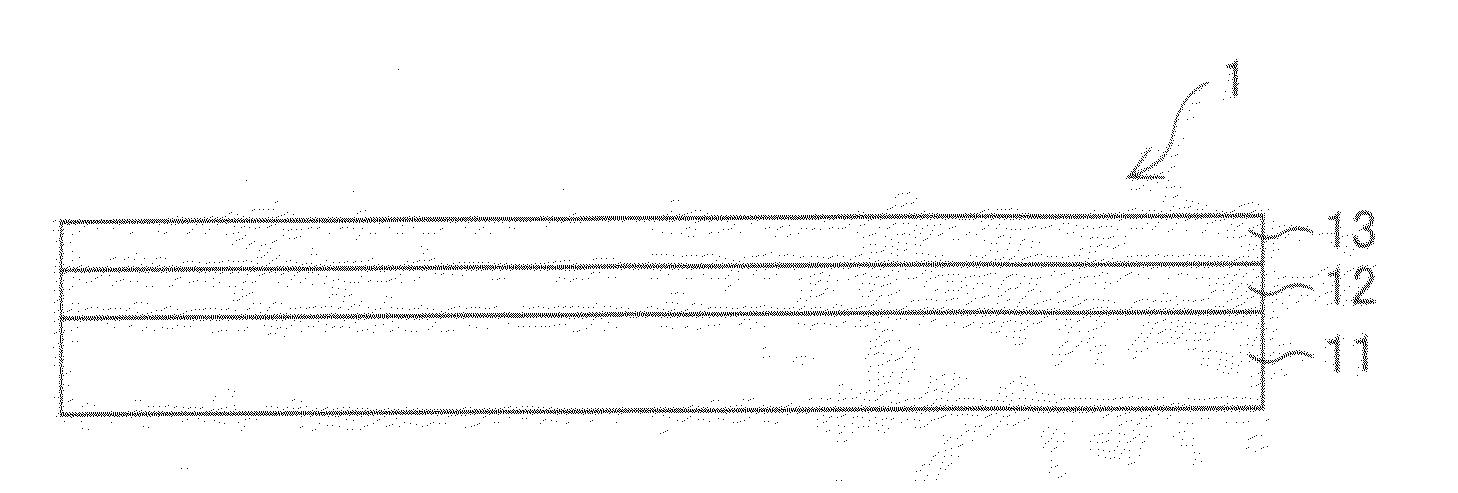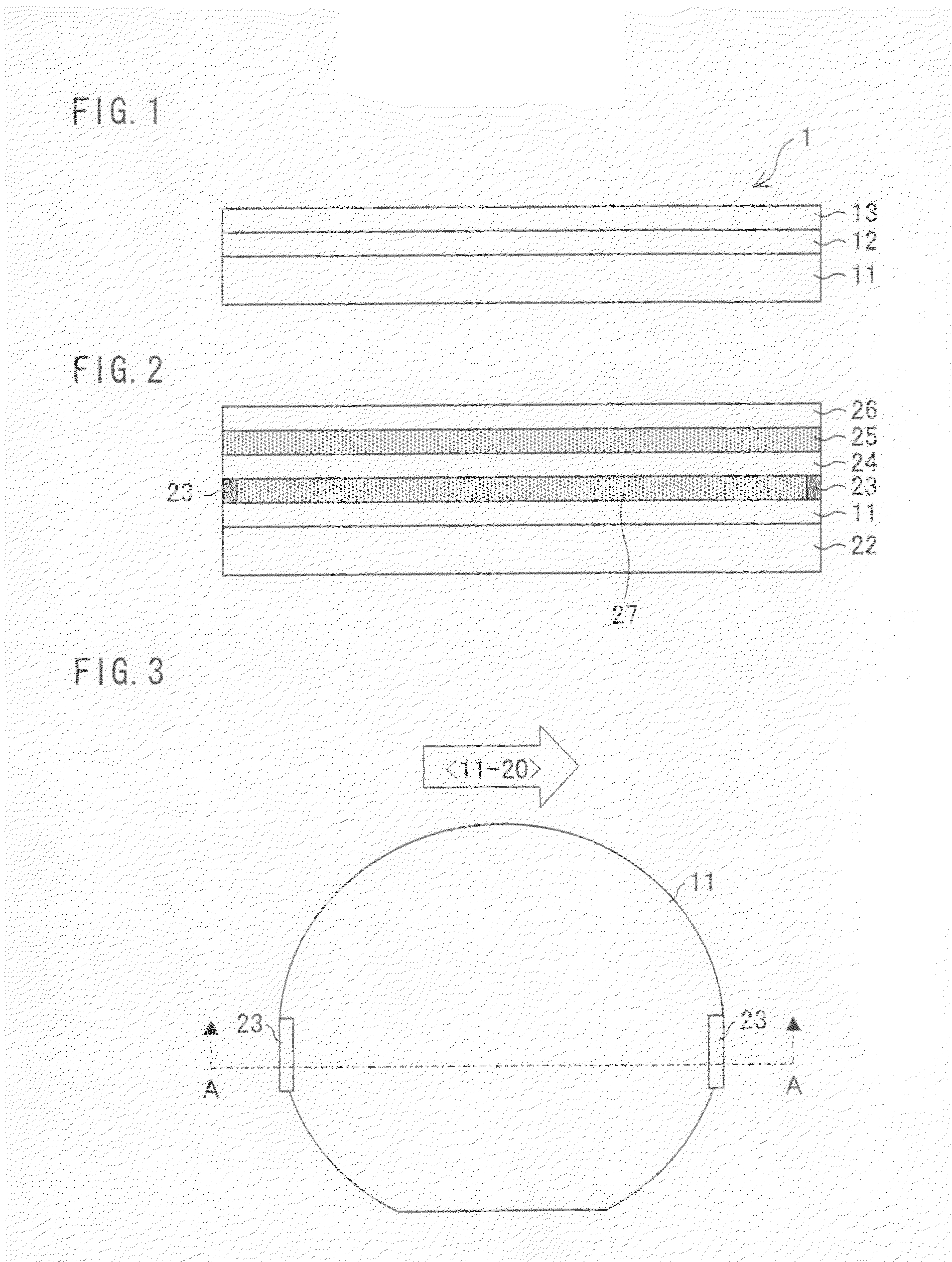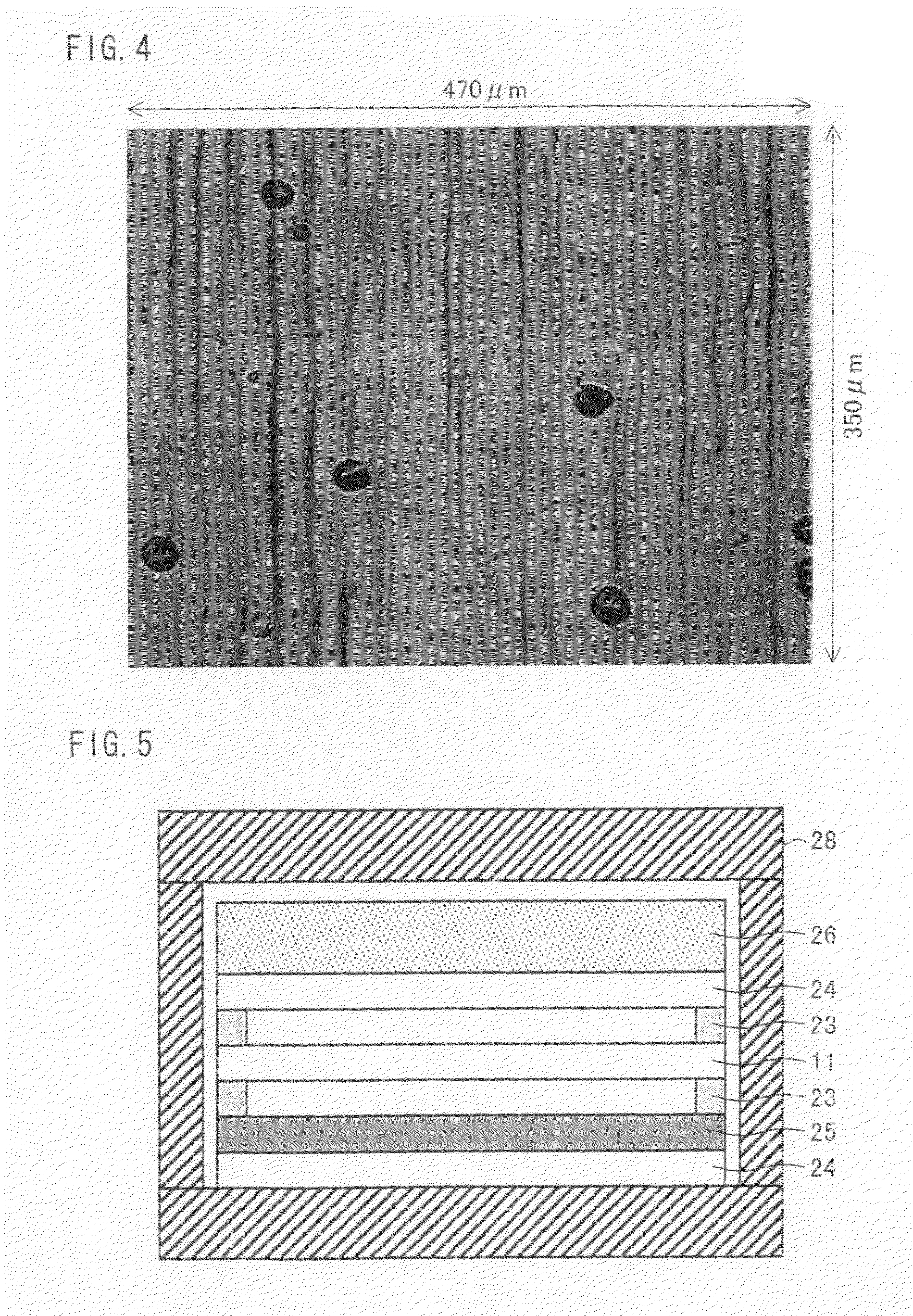Sic epitaxial substrate and method for producing the same
a technology of epitaxial substrate and substrate, which is applied in the direction of crystal growth process, polycrystalline material growth, crystal growth process, etc., can solve the problems of insufficiently preventing the occurrence of such defects as basal plane dislocations and screw dislocations, and the active layer of the active layer of the active layer of the conventional arts is problematically affected, so as to achieve the effect of improving the buffer layer
- Summary
- Abstract
- Description
- Claims
- Application Information
AI Technical Summary
Benefits of technology
Problems solved by technology
Method used
Image
Examples
Embodiment Construction
[0061]One embodiment of the present invention is described below. FIG. 1 is a cross-sectional view illustrating an arrangement of a monocrystal SiC epitaxial substrate 1 according to the present embodiment.
[0062]As illustrated in FIG. 1, the monocrystal SiC epitaxial substrate 1 includes a monocrystal SiC substrate 11; a buffer layer 12 formed on the monocrystal SiC substrate 11; and an active layer 13 formed on the buffer layer 12.
[0063]The monocrystal SiC substrate 11 may be conventionally known monocrystal SiC substrate (e.g., a commercially available monocrystal SiC substrate). The present embodiment used a 4H—SiC substrate having an 8-degree off angle along a direction indicated by . Further, the monocrystal SiC substrate 11 of the present embodiment had a surface on which the buffer layer 12 was formed, the surface having been planarized by chemical mechanical polishing (CMP) before the buffer layer 12 was formed. The planarization removed trace of polishing (polishing marks),...
PUM
 Login to View More
Login to View More Abstract
Description
Claims
Application Information
 Login to View More
Login to View More - R&D
- Intellectual Property
- Life Sciences
- Materials
- Tech Scout
- Unparalleled Data Quality
- Higher Quality Content
- 60% Fewer Hallucinations
Browse by: Latest US Patents, China's latest patents, Technical Efficacy Thesaurus, Application Domain, Technology Topic, Popular Technical Reports.
© 2025 PatSnap. All rights reserved.Legal|Privacy policy|Modern Slavery Act Transparency Statement|Sitemap|About US| Contact US: help@patsnap.com



